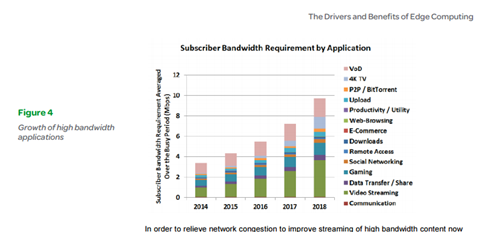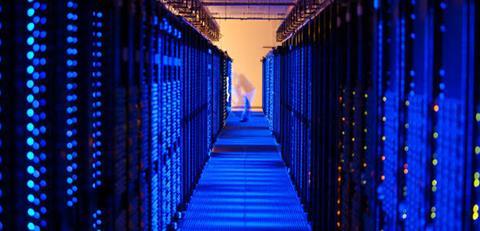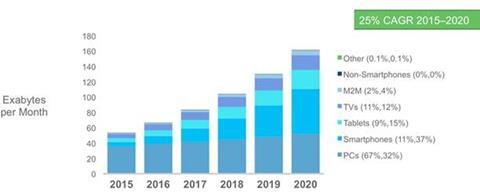Competition is hotting up as the data centre sector sets its sights on the broadcast market.

On a simplistic level a data centre can be thought of as a giant fridge. Or in this IOT age, as a giant smart fridge comprising as it does of a shell, power, cooling and connectivity.
Data centres are measured in power and white space - mega watts (MWs) and sq metres respectively. The amount of power delivered to the racks – which house the servers, storage and networking equipment is its power density.
Data centres are said to account for 2% of the earth’s electricity use and the booming growth in data – much of which will be HD and then UHD video - is driving innovations in construction and management of data centre facilities.

An industry group known as the Green Grid developed a metric known as PUE (Power Usage Effectiveness) to measure data centre efficiency. This is a simple equation to measure a very complex thing. It is a calculation of the power entering the building over the power that reaches the IT equipment – the machines that do the work. A PUE of 1 would mean a data centre is 100% efficient as no power is lost in transmission from the grid or used in cooling the IT equipment.
Netflix was one of the first content companies to complete the move from its own data centres to the public cloud.
What type of data centre?
Data centres can be split into three categories.
- Owner-managed: bespoke design and operated by the user
- Commercial data centres: known as the co-location industry
- Web-scale cloud data centres: designed, built and operated by firms such as Google, Apple, Amazon, Microsoft, Ali Baba and Facebook (see below).
Netflix and migration to the cloud
Most broadcast organisations will operate a hybrid data centre strategy split between the three – depending on their application needs and preference for public, private or hybrid cloud computing.
Netflix was one of the first content companies to complete the move from its own data centres to the public cloud.
The streaming operation has been completed with the move to Amazon Web Services (AWS) in early 2016. The migration took over seven years to be finalised and the last remaining streaming data centres were shut down as a result.
Netflix operates its own content delivery network (CDN) and continues to manage Open Connect from Amazon.
Amazon locates its data centres near internet exchange points these facilities transfer content traffic. Netflix works as the distributor to network operators such as Comcast, Verizon and AT&T as streaming is not operated from a single data centre space.
Targeting broadcasters
On the commercial side, companies such as Equinix, Digital Realty and Interxion are among the big beasts which build and operate facilities.
Interxion’s data centre infrastructure provides direct access to communicate networks from their data centres in order to deliver digital content with the concentrated distribution in both on-demand and real time to their client companies.
Riedel Networks has a huge business in live sports broadcasting and uses Interxion’s data centres.
Riedel Networks chief executive Michael Martens says: “Our customers can select the technology they want for connecting their sites or transmitting TV signals.
“A carrier-neutral data centre that offers the best possible connectivity and a highly available, flexible, high-speed infrastructure is essential to our ability to provide high performance, failsafe MPLS networks.”
Interxion is not the only data centre firm targeting the sector with many boutique and national operators positioning themselves as optimised for broadcast.
LDeX1 data centre based in London offers services to online TV and radio broadcasters for streaming live events which include digital rights management and real-time analytics.

Simplestream as a client of LDeX1 and is receiving multiple services to assist the company in delivering content to the public.
An important feature is the company’s live streaming of sport events such as the World Cup and RBS Six Nations on multiple devices.
Amazon announced a London data centre which is due to be available in 2017 and has previously named ITV, the BBC and Channel 4 as clients.
The huge growth in data files will continue to spur data centre investment with forecasts predicting compound annual growth rate of over 10% until at least 2020.






















No comments yet